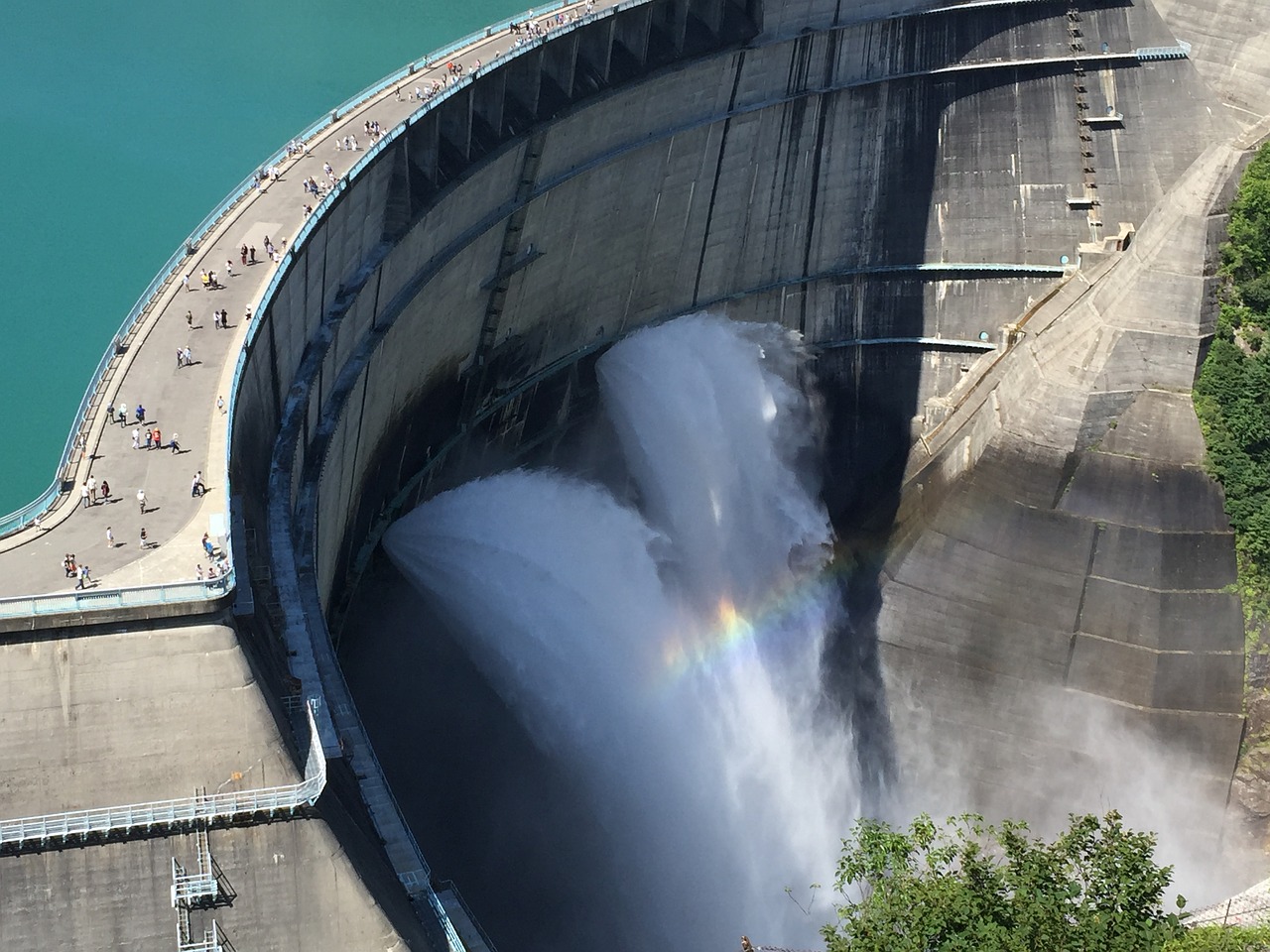Dam-break phenomenon in optical fibers
Last May, for the first time, researchers from the University of Lille and IMT Lille-Douai exposed a photon dam breaking in an optical fiber. These results provided the experimental confirmation for an old theory that dates back over 50 years. Above all, this research reveals a surprising analogy with a water dam break, creating the prospect of collaboration between physicists from different fields.
The problem facing a physicist working on the way water flows after a dam failure, is that there are not many opportunities to compare theory with experience. Despite their occasional portrayal in works of fiction, researchers are rarely sociopaths. Therefore, very few scientists would be ready to blow up a dam in the mountains to experimentally confirm the results of their equations. They must therefore find alternative solutions. One such solution could very well be to simulate a dam break using an optical fiber and a laser. At least this is what is suggested in the results published one June 20 in the journal Physical Review Letters. Five optical physics researchers from the University of Lille and IMT Lille-Douai authored this scientific article: Gang Xu, Matteo Conforti, Alexandre Kudlinski, Arnaud Mussot and Stefano Trillo.
For the first time, this team from the Physics of lasers, atoms and molecules laboratory (PHLAM) observed a dam of photons—the elementary particles of light—breaking in an optical fiber. “A photon dam is a light pulse from a laser with two very different levels of intensity,” explains Arnaud Mussot, a researcher at IMT Lille-Douai and a PHLAM member. The light signal is made up of a group of photons with a high energy level (those sent with high intensity), and another group with a lower energy level. This situation is similar to a true dam, in which the altitude of the water replaces the energy of the photons.
By comparing the light signal’s shape at the input and output of an optical fiber measuring 15 kilometers long, the researchers observed an alteration in the signal. The two very distinct plateaus, with the high energy photons at the top and the low energy photons on the bottom, were disrupted during transit. The output signal showed a third plateau in the middle, revealing that some photons had lost energy. In addition, “the plateaus were now connected via very slow, oblique wave fronts, which are rarefaction waves and shock waves,” Arnaud Mussot explains. Just like waves that span out when the wall retaining the water breaks.
The reason the comparison between these two dam types is so significant, is that both events are similar from a mathematical point of view. Similar equations describe the photons’ behavior within the optical fiber and water that rushes out after a break in the infrastructure. “In order to make them identical, we had to configure our experiment a certain way,” the researcher explains. They specifically needed to prevent signal dropouts caused by propagation along the length of the cable, since no analogy of this phenomenon exists in the water dam scenario. “We set up an original system to compensate for these dropouts by using an in situ optical amplifier,” Arnaud Mussot adds.

(a) Photograph of the Teton River dam breaking in Idaho, USA, in 1976. Results from the input (b) and output (c) of an optical fiber. The red arrows show the analogy between the difference in the water altitude and the difference in the photons’ energy levels. The green areas show the characteristics of the wave’s chaotic behavior following the dam break.
There are limits, however, to the similarity between the two kinds of dams, and they are only clearly established in very specific situations in which the modeling equations are valid. Local topography—which is very specific—will probably require additional corrective terms to be included in the models. However, this analogy remains “a good method for observing experimental results of theoretical equations, and validating them through experiments,” explains Arnaud Mussot. These scientific results will therefore enable connections to be made between scientists working on both subjects. The communities will be able to provide each other with their respective results, to the benefit of both fields.





Leave a Reply
Want to join the discussion?Feel free to contribute!